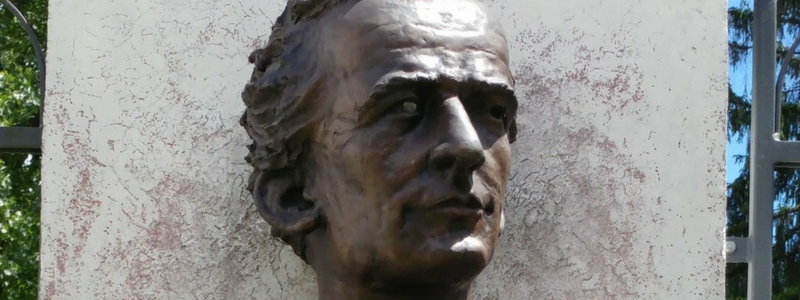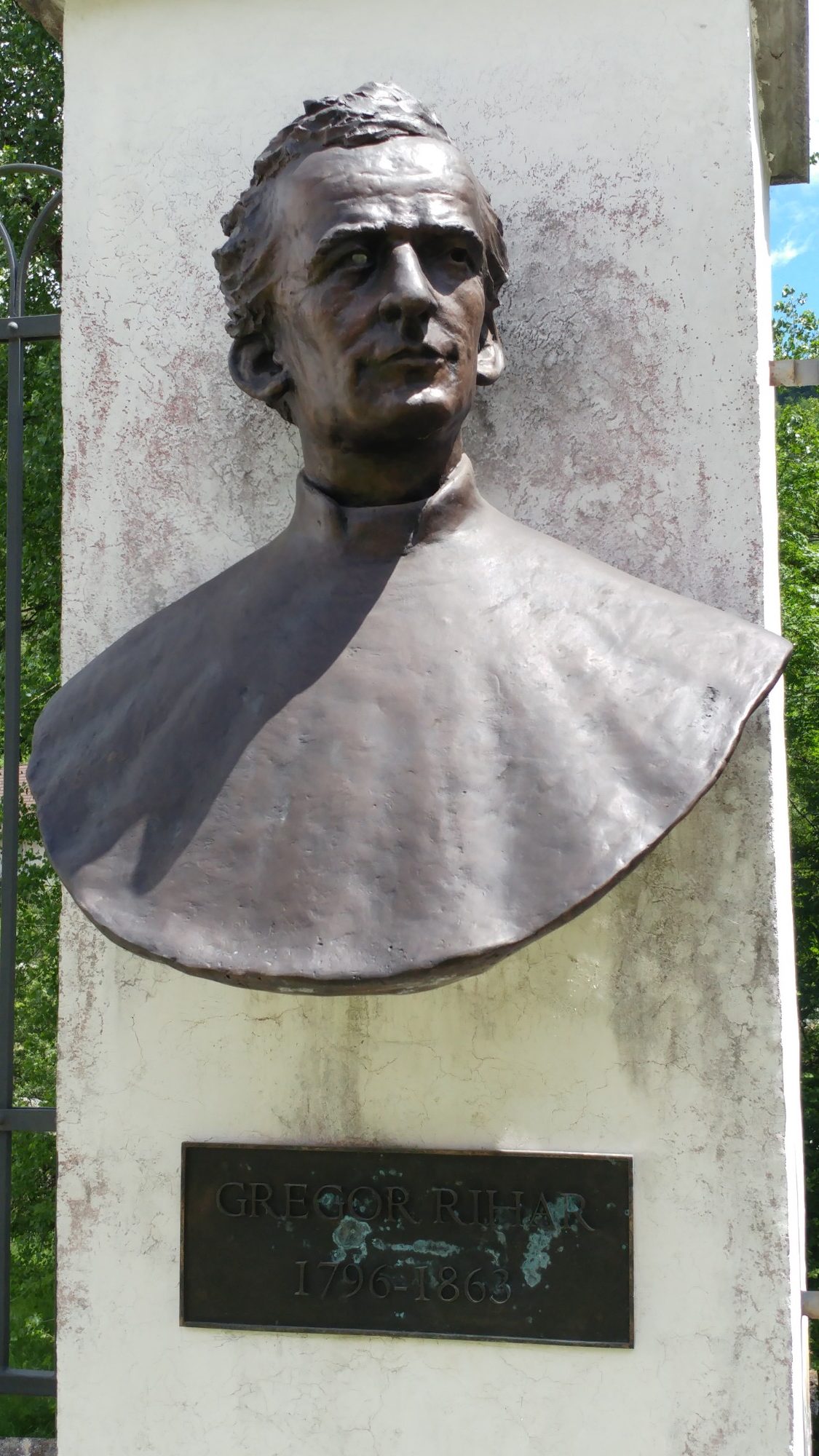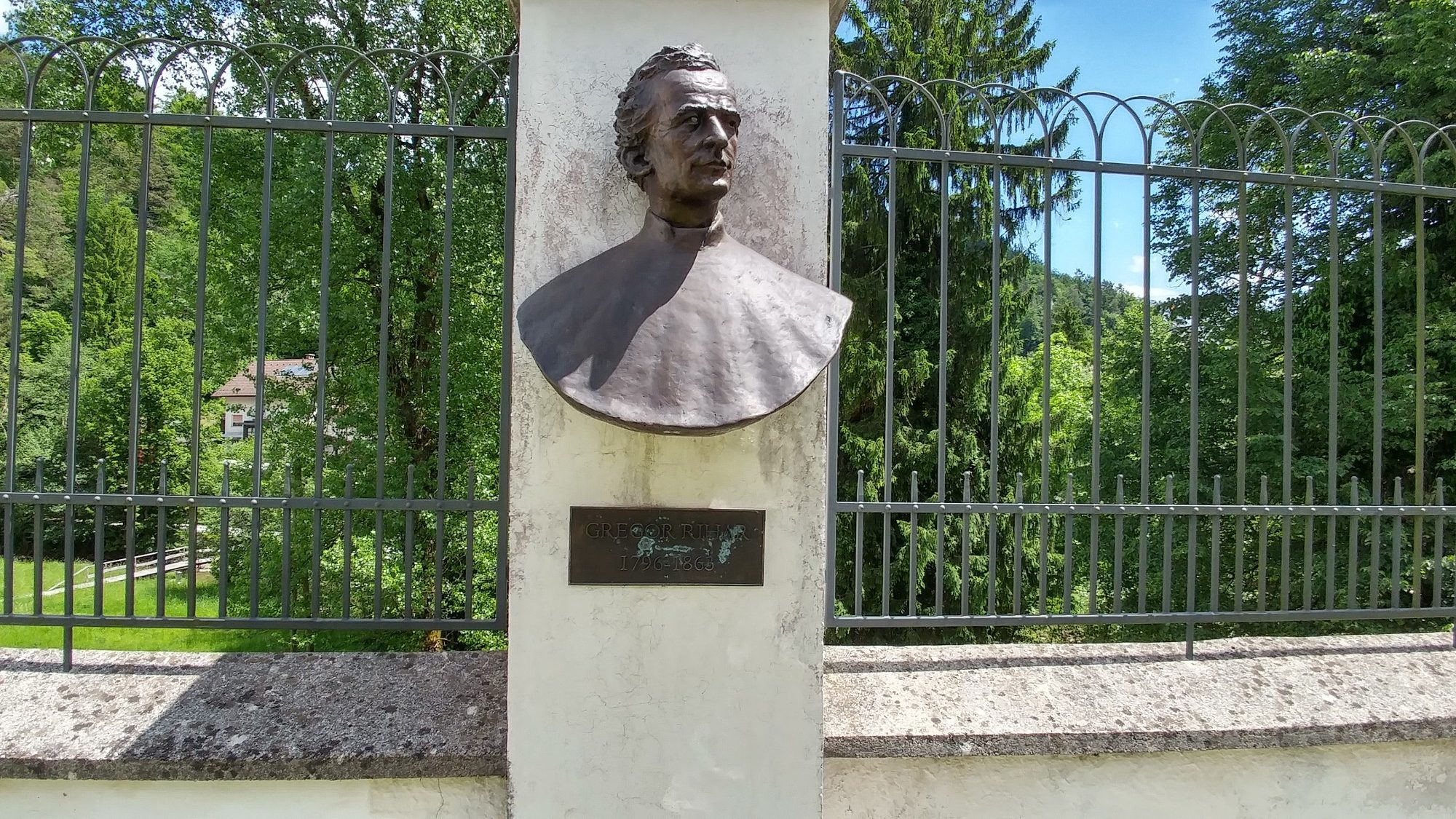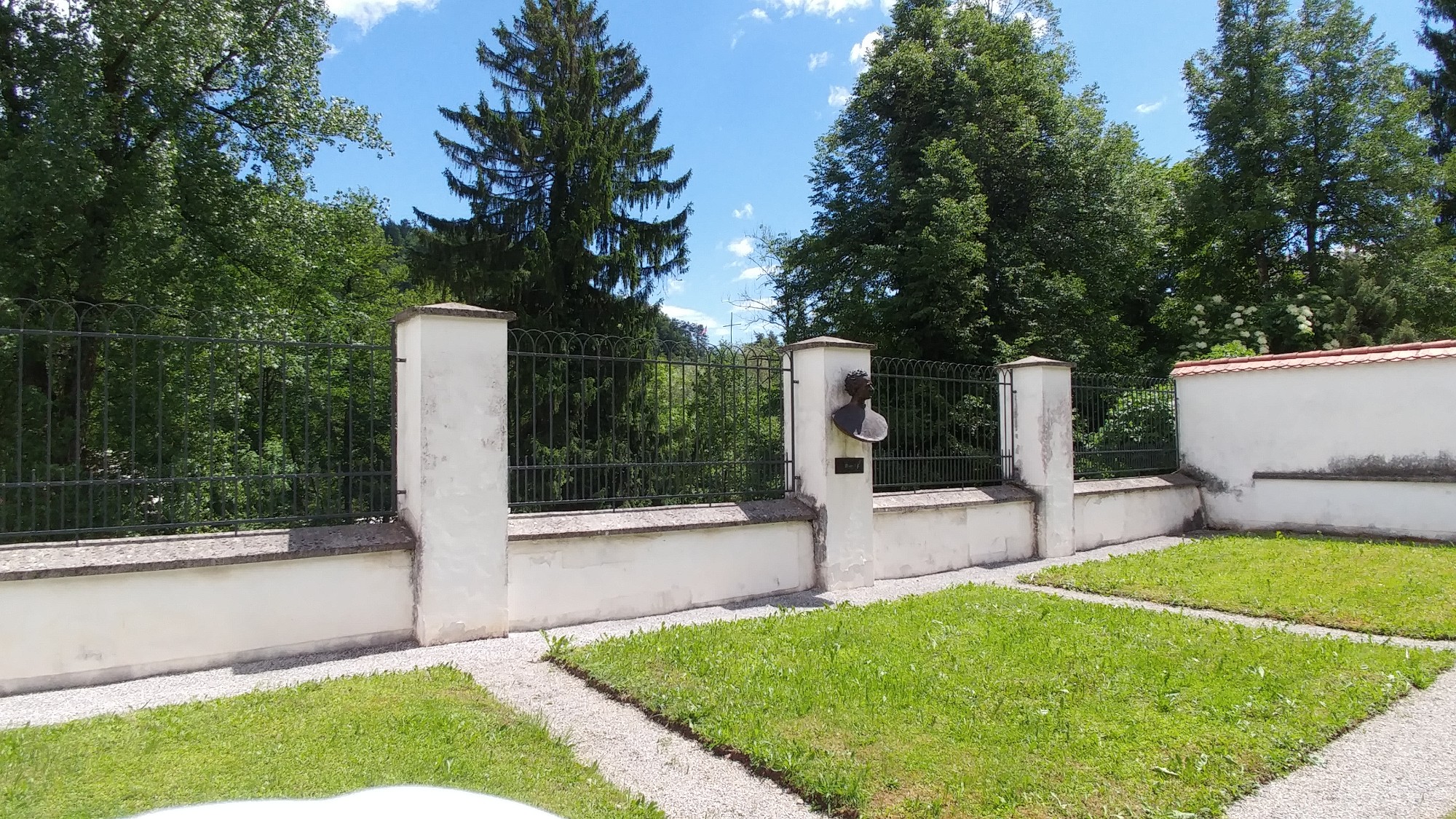A bust of Gregor Rihar, made by academy-trained sculptor Edo Dolinar, stands in the Manor garden, which is also adorned by a statue of Count Blagaj. It was erected in 2014 during the celebration of the municipal holiday.
Gregor Rihar
Composer Gregor Rihar (1796–1863) devoted himself primarily to vocal music, veering between simple classicism and emerging romanticism. Alongside Luka Dolinar and Blaž Potočnik, he is acknowledged as one of the reformers of mid-19th-century church vocal music in Slovenia. Although he had no formal music education, Rihar’s legacy includes a vast amount of compositions for church service and secular occasions. His musical settings were performed not only during services, but also on various social occasions, including the bésede cultural events. Bearing in mind that not all music is suited for a church service, Rihar, as choral director of Ljubljana Cathedral, introduced vocal compositions of more serious substance into the Eucharist ritual, music which had given way to lighter instrumental genres.
The boy from Pristava pri Polhovem Gradcu was initiated into music by the chaplain of Polhov Gradec Manor, Robert Lesjak. Rihar soon became the Polhov Gradec organist. He had an excellent ear, and showed rapid progress in playing. At the age of nineteen, he went to study in Ljubljana, first at grammar school and then at the lyceum and theological seminary, and was thereafter ordained as a priest. He was tutored in organ and basso continuo (figured bass) by the Cathedral’s organist, Anton Höller. He played organ at Sunday mass instead of the aged mentor in return for his tuition. In 1826, Rihar succeeded the deceased Höller as organist and choral director of Ljubljana Cathedral.
At that time, wind bands were gaining widespread popularity in Slovenia, playing national and foreign dance-music genres, including minuet, waltz and polka, catchy tunes that worked their way into more dignified places of worship. Confronting this phenomenon as the Cathedral choral director, Rihar thus strove to assign a more important role to singers, also believing that the role of instrumentalists should be reduced. He sought to expand this model to provincial churches, where the secularist tendency was even more pronounced, but met with opposition from both musicians and worshippers used to, and more appreciative of, more relaxed music, tinged with traces of dance tunes, during church service.
His sustained efforts were nevertheless rewarded; through his extensive output of religious and secular songs, he succeeded in reforming popular taste, inspiring a liking for serious church song and reinvesting the church service with some of the solemnity it had lost in adopting wind-band music. His consummate skill as an organist, demonstrated most clearly during mass in Ljubljana, strengthened Rihar’s artistic renown, which furthermore benefited from the fact that his works were sung at besede, cultural events of the nationally conscious Slovenian Society. He is thus acknowledged as a forerunner of reading-room music, which was aimed at building Slovenian cultural identity.
That his compositions were sung before Rihar’s first collection was published is testified by the earlier origin of the poems he set to music. Namely, the first editions, two volumes of Viže za svete pesmi (Tunes for Sacred Songs, 1844–45) are based on poems by Blaž Potočnik, some of which were published fifteen years before being set to music. From the beginning of the 1850s until Rihar’s death in 1863, other collections followed: the five volumes of Napevi svetih pesmi (Melodies of Sacred Songs), three volumes of masses, the collection Thesaurus cantus ecclesiastici figurati, several editions of Tantum Ergo and single issues of religious songs, Venec četveroglasnih pesmi (Wreath of Four-part Songs) and Narodni napevi (National Melodies).
The compositions are in Slovenian and Latin, mainly for four voices and homophonic (voices follow the course of harmony in unison), reflecting a good feeling for melody, in all probability partly under the influence of Italian opera. While predominantly displaying simple harmony, they include modulation and original chord progressions. The rhythm is unelaborate, and musical forms usually uni-, bi- or tripartite. He composed the simpler four-part vocal texture so as to facilitate its being performed, if need be, with organ accompaniment in the case of a smaller vocal ensemble. In his later collections, e.g. his Tantum ergos, he separately notated the organist’s part, sprouting into clusters of faster notes, more ornate and technically more demanding. While these characteristics show that Rihar’s later works surpass classicism in incorporating traits of early romanticism, his earlier compositions are written in a simple classicistic spirit, as evinced by the accompanying figures of short organ passages interspersing the sung text.
Lev Fišer




